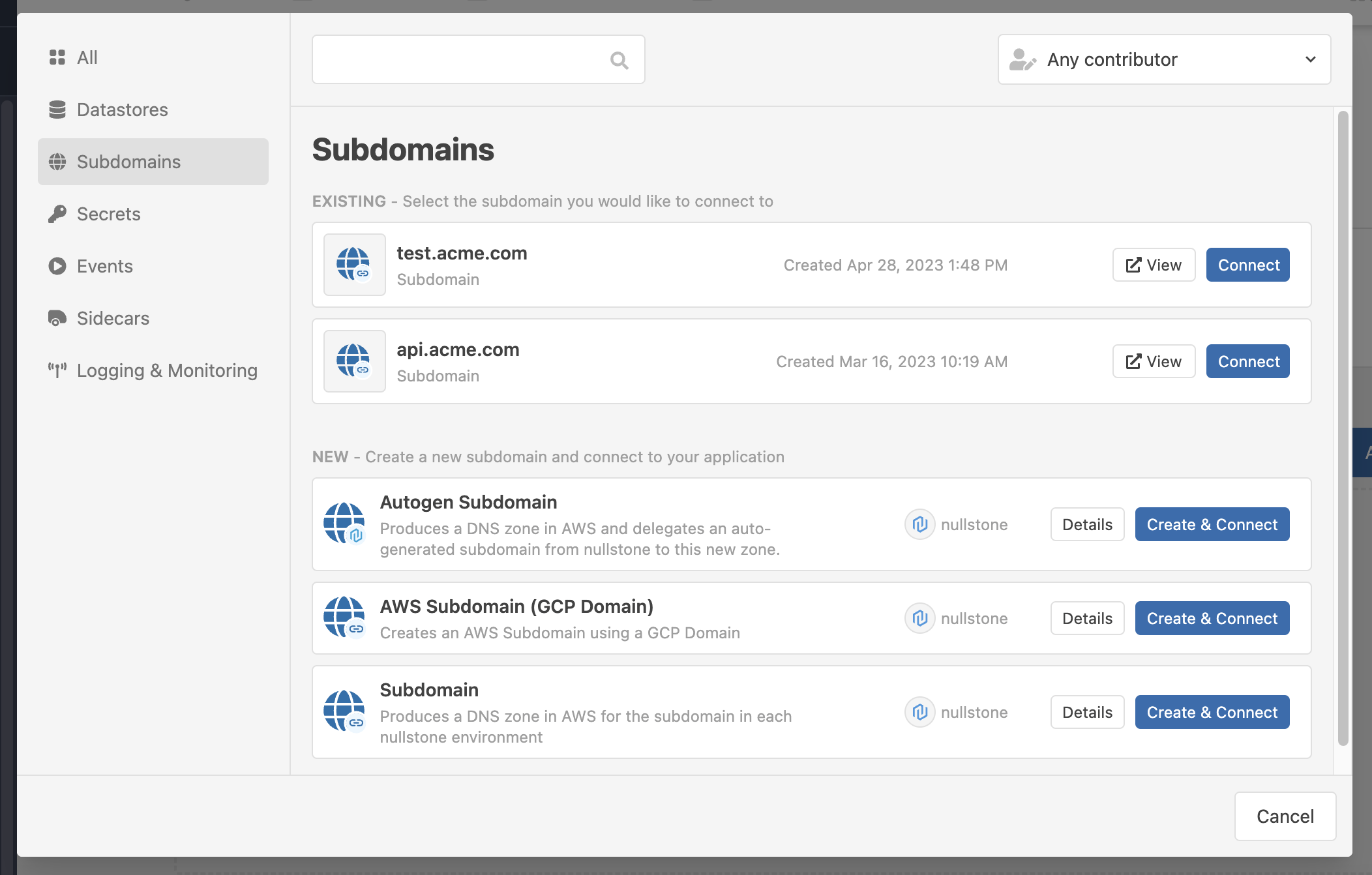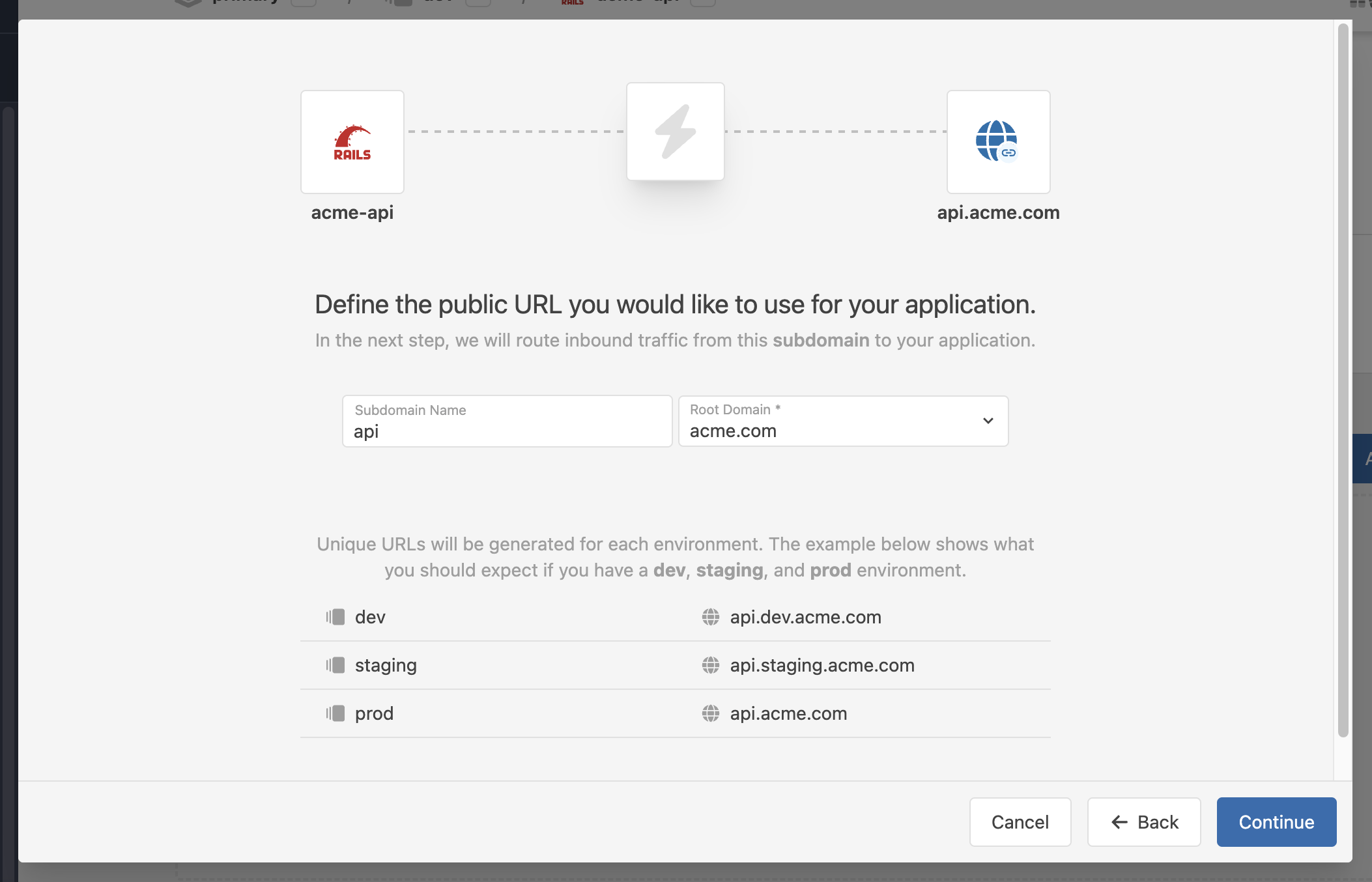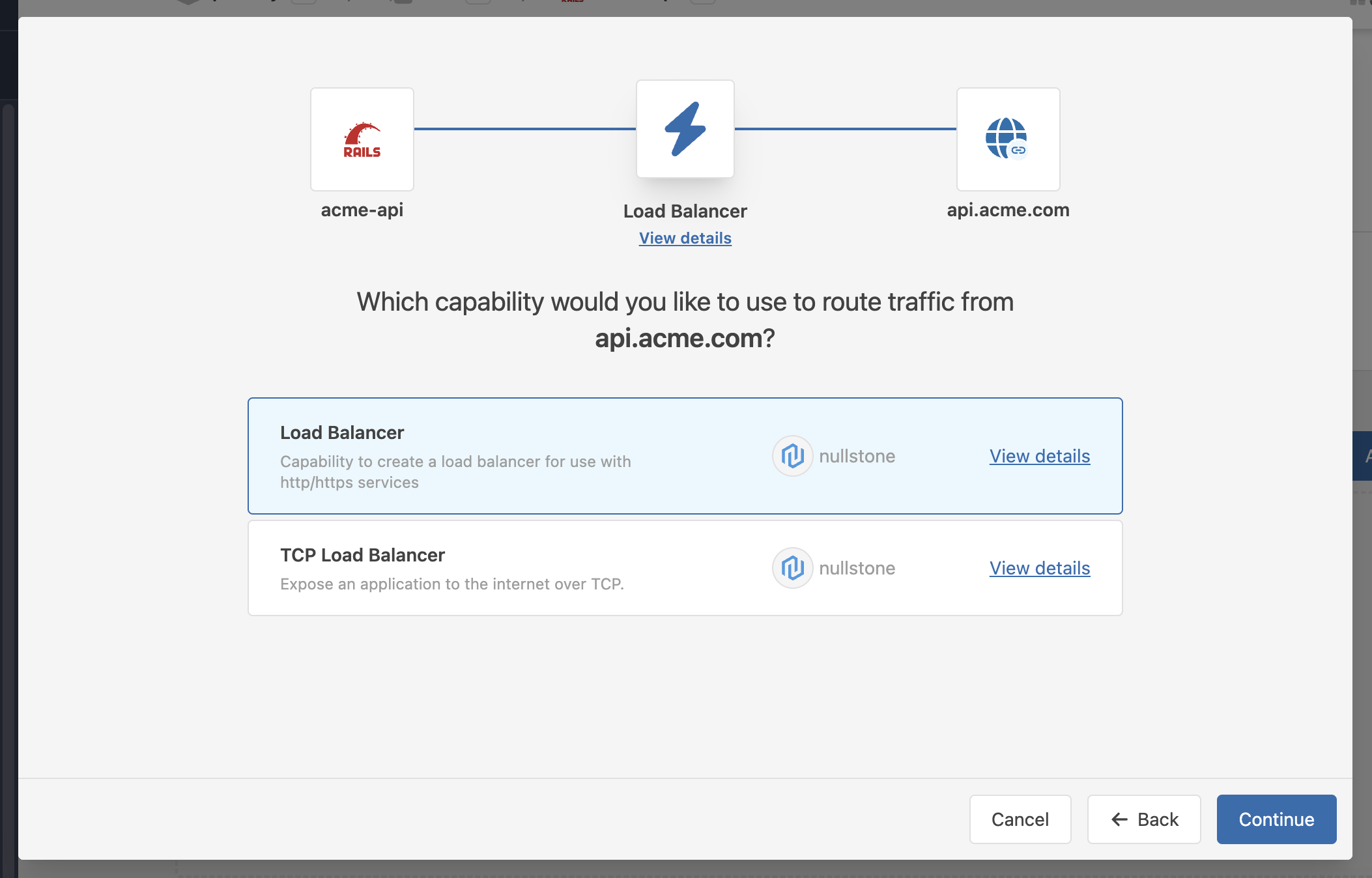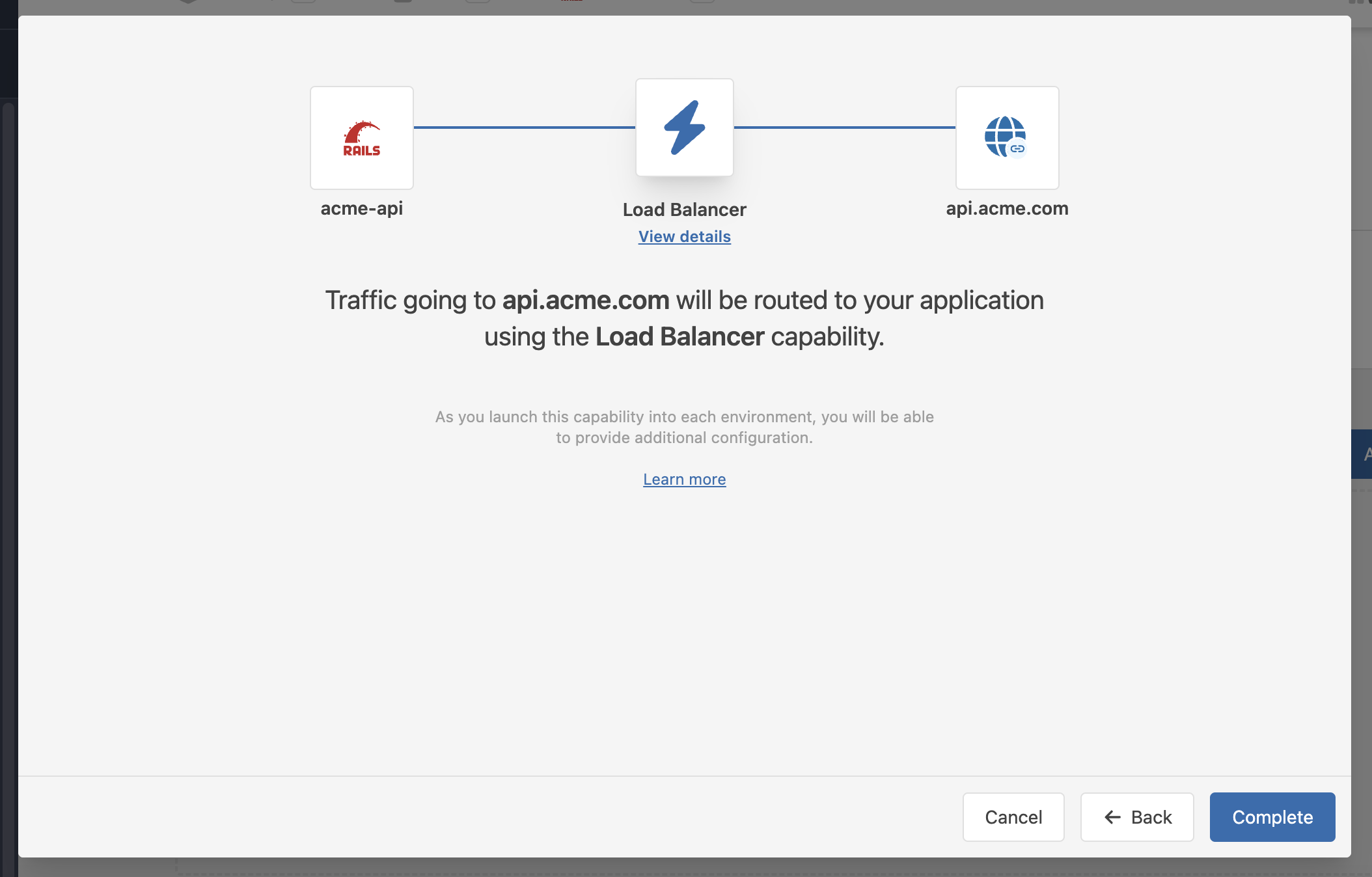Subdomains
By default, applications in Nullstone are protected behind private networks. In order to make our application public, we need can add a Subdomain capability to our application.
From the application's Capabilities tab, click to add a new capability. You can select an already configured subdomain or create a new one and connect.

Autogen Subdomains
The Autogen Subdomain option provides you with a way to launch quickly without worrying about purchasing and configuring a domain. If you select Autogen Subdomain, Nullstone will automatically generate a public url in the form https://<generated>.nullstone.app. (where <generated> is a random set of letters and numbers)
example: https://nahozswuu2.nullstone.app:443
TIP
Autogen Subdomains are the only option for personal accounts. To use a custom domain, you must upgrade to a paid plan.
Custom Subdomains
Nullstone allows you to register your company's domain and use it to configure custom urls for your applications. To use a custom subdomain, you must first register and configure your domain in Nullstone. Only users with the Architect role can configure domains. See the Custom Domains docs for more details.
Once the architect or admin for your organization configures your domain, you can create subdomains for your applications. In the example below, I have selected the Subdomain module by clicking Create & Connect.

Next, choose the capability module you would like to use. In the example below, I have selected the standard Load Balancer module.

Confirm your selections to add the capability.

Nullstone Provided Subdomain Module
If you choose the Subdomain module provided by Nullstone, it provides functionality to ensure you have unique urls for each environment.
As you launch in each environment, toggle the vanity parameter to control whether the environment name is included in the url. If your subdomain is api.acme.com, then the dev environment will be given a url of api.dev.acme.com. In the prod environment, set vanity to false in order to have a url of api.acme.com. The chart below illustrates this example across many environments.
| Environment | Vanity | URL |
|---|---|---|
| dev | false | https://api.dev.acme.com |
| sandbox | false | https://api.sandbox.acme.com |
| staging | false | https://api.staging.acme.com |
| prod | true | https://api.acme.com |
SSL Certificates
No matter what type of domain you configure for your application, Nullstone will ensure that a valid SSL certificate is provisioned and your application is hosted using https. SSL termination will happen at the Load Balancer, so you don't need to handle this in your application.